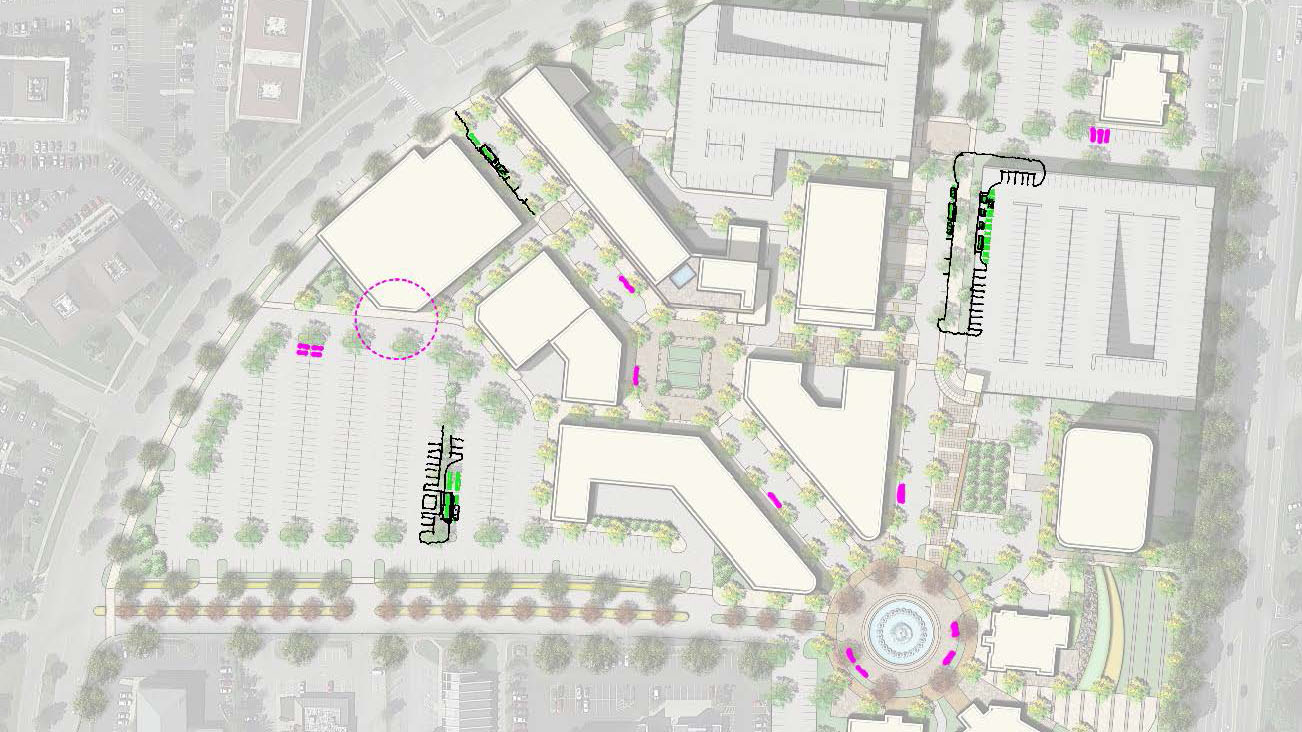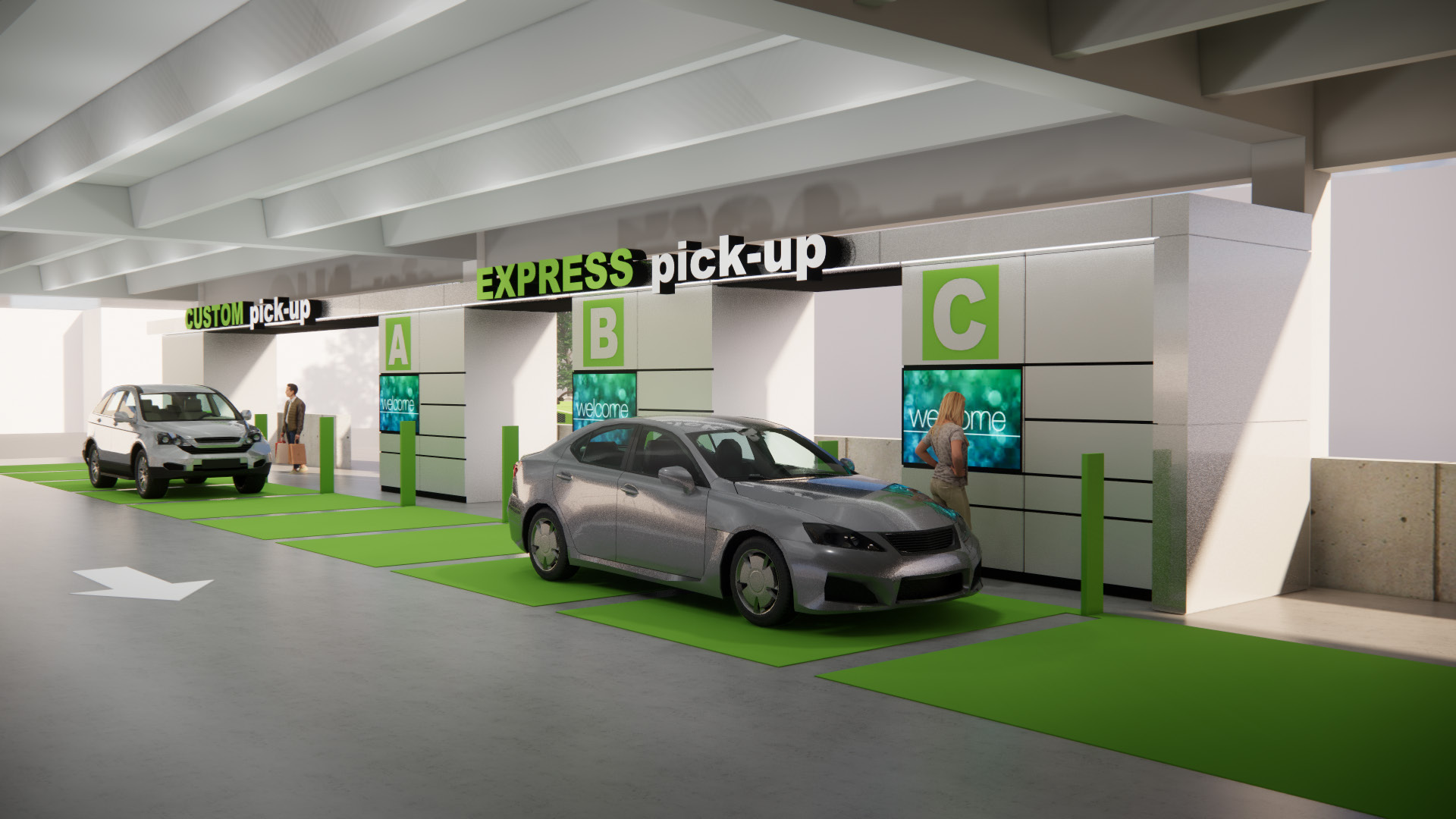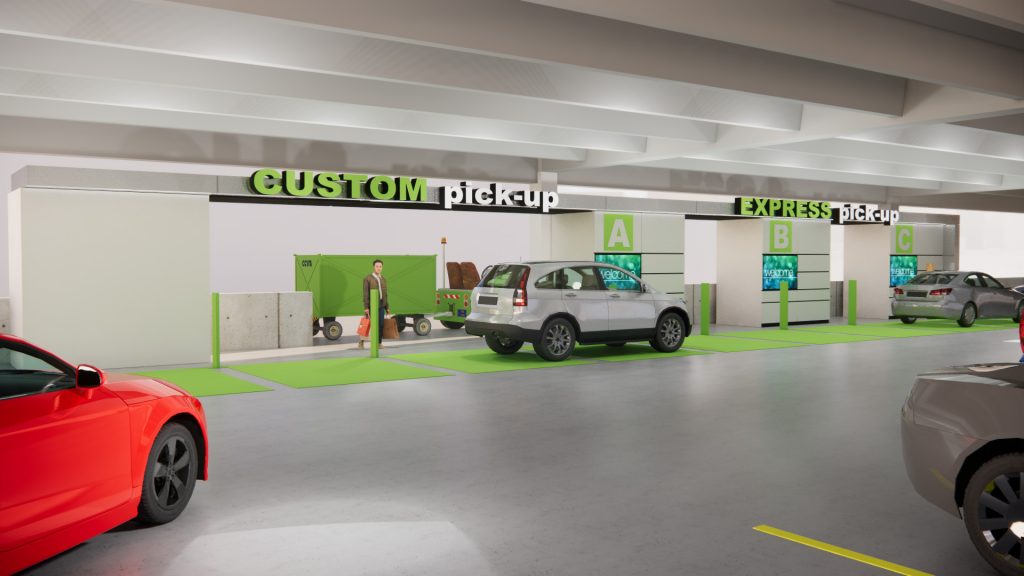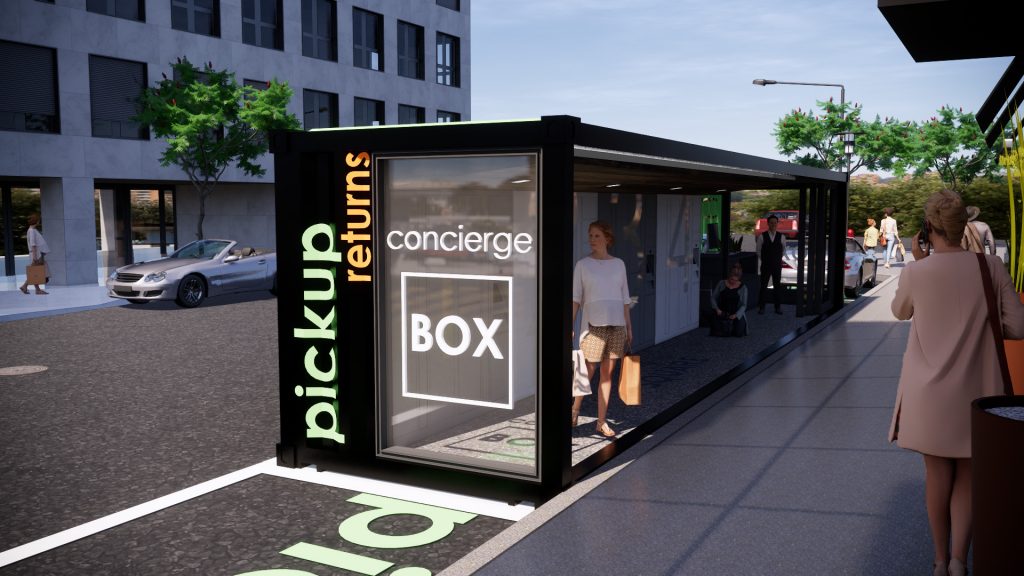The Four Principles to Creating Successful Click-and-Collect Solutions
By: NELSON Worldwide
With the rapid growth of e-commerce and a global pandemic causing retail developments to limit capacity or temporarily close, transforming underutilized space into creative pickup and return concepts is a clever and valuable way to meet consumer demands now and in the future. When activating a development for click-and-collect opportunities, there are four principles to creating successful consumer engagement:
Identify underutilized space
Whether it’s a mixed-use development with underutilized storefront parking, or a traditional mall with excess garage space, the first step is identifying these dead spaces and transforming it to become a new touchpoint for transaction.
With increased delivery speeds, ride sharing apps, and lower foot traffic inside stores due to COVID-19, the demand for parking is shrinking. Developers can outfit a few parallel parking spaces in front of stores with prefabricated shipping containers that house walk-up lockers with adjacent loading spaces. This allows shoppers to quickly drop off returns or pick up orders without having to go inside a crowded store.
Traditional malls and shopping centers have a plethora of unused parking spaces that can be made into something more relevant for today’s consumer. A partial row of parking spaces within an existing surface lot or garage can be converted into a drive-up pickup area. These destinations can offer automated lockers or loading/unloading services.
Provide designated support
Having a viable click-and-collect solution is nothing without support. In-person or digitally operated, it’s critical to make these novel activations successful.
Support looks different depending on the type of development. If it’s a standalone click-and-collect box located in an isolated parking lot, it may need a designated customer service representative. If it’s directly connected to a shopping center with plenty of in-person support nearby, a designated app or digital kiosk could suffice. Determine what’s right for the development and provide a thoughtful support model that fits.
One trend we see many brands adopting post-pandemic is smartphone technology services that offer product information and seamless support. As consumers continue to avoid communal, high-touch surfaces, brands have realized that the technology found inside our pockets is a valuable channel for click-and-collect models.
Create an integrated customer journey
While support is just one element of the larger customer journey, developers must also consider the holistic experience from start to finish to make a positive, lasting impression. It starts with the promotion of the service offering on the shopping center’s website, mobile app, or social media accounts. Consumers must first be aware of the perk before they can start to enjoy it. It is also about managing traffic for both cars and people, wayfinding, and minimizing bottlenecks.
Communication, notifications, and status updates leading up to the pick up or return are imperative. This can be accomplished through text message or email. Upon arriving to the destination, minimizing confusion and frustration can be solved immediately through clear signage. Consistent wayfinding from the second a consumer enters a shopping center is another key element of a successful, streamlined customer journey.
When considering a parking lot click-and-collect solution, there should be dedicated lanes for people dropping off versus picking up – even dedicated entrances may be necessary for in-store click-and-collect models. It’s about seamlessly integrating both physical and digital touchpoints for consumers, so they are always aware of what to expect and what they need to do to accomplish the task at hand.
Remember your brand purpose
Brands must be strategic about how they approach these strategies, especially today while navigating the impacts of COVID-19. Even if it’s a short-term solution, it’s still a reflection of the brand and must feel authentic to consumers.
Developers must lean into their brand and make their click-and-collect solutions look and feel like what they already have to offer. Signage, wayfinding, and branding for these services is a great opportunity to make an immediate impact and present a true “wow” factor. Temporary sandwich boards and do-it-yourself window signs will take away a property’s credibility and seem like an after-thought, versus an innovative, thoughtful solution. A professional, branded look will not only differentiate you from the competition but provide consumers with a visual cue that they can trust that their experience will be seamless and keep them coming back long after the pandemic is over.
Finally, consumers are fluid and are constantly altering their preferences based on external factors, their own need states, and advancements in technology. And to be successful, brands must function the same way. With the rise in e-commerce, and a global pandemic changing the way the world behaves, a demand lies in safe and convenient pickup and return options, but tomorrow, the ask may change, and the concept must be flexible and nimble enough to evolve with the consumer.

Let's Connect:
NELSON Worldwide,
NELSON Worldwide is an award-winning firm, unlocking value for clients through architecture, interior design, graphic design, and brand strategy. With more than 600 teammates across 20 offices, the firm’s collective network provides strategic and creative solutions that positively impact where people work, serve, play, and thrive. The team combines industry knowledge, service expertise, and geographic reach to deliver projects across the country and around the world. Client partnerships across the NELSON network include Hilton, Macy’s, Comcast, Simon Property Group, Prologis, Yum! Brands, Boston Consulting Group, T-Mobile, Emory Healthcare, SAP Fieldglass, Unibail-Rodamco-Westfield, Kroger, Hyatt, Bayer, Target, and many more.



